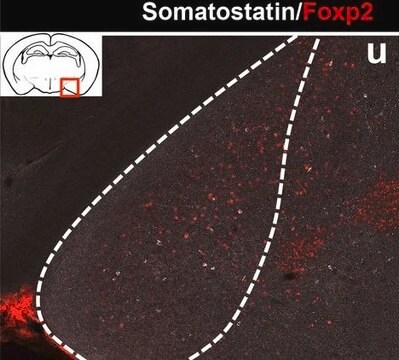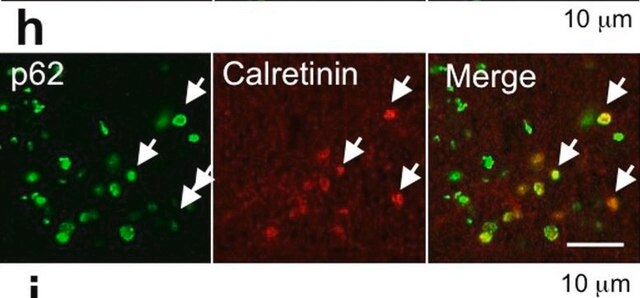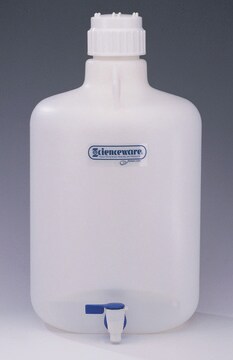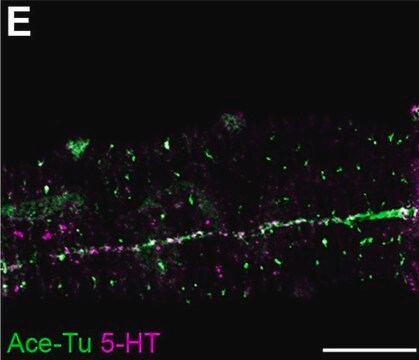C2581
Anti-Cholecystokinin (26-33) (CCK-8) antibody produced in rabbit
whole antiserum
Sinonimo/i:
CCK Antibody - Anti-Cholecystokinin (26-33) (CCK-8) antibody produced in rabbit, Cck Antibody
About This Item
Prodotti consigliati
Origine biologica
rabbit
Livello qualitativo
Coniugato
unconjugated
Forma dell’anticorpo
whole antiserum
Tipo di anticorpo
primary antibodies
Clone
polyclonal
contiene
15 mM sodium azide
Reattività contro le specie
human
Confezionamento
antibody small pack of 25 μL
tecniche
competitive inhibition ELISA: 1:1000-1:2000
immunohistochemistry (formalin-fixed, paraffin-embedded sections): 1:8,000 using indirect immunoperoxidase staining of human stomach
N° accesso UniProt
Condizioni di spedizione
dry ice
Temperatura di conservazione
−20°C
modifica post-traduzionali bersaglio
unmodified
Informazioni sul gene
human ... CCK(885)
Descrizione generale
Immunogeno
Applicazioni
- immunohistochemistry
- double-label immunofluorescence staining
- immunocytochemistry
- ELISA immunoassay
Azioni biochim/fisiol
Esclusione di responsabilità
Non trovi il prodotto giusto?
Prova il nostro Motore di ricerca dei prodotti.
Codice della classe di stoccaggio
10 - Combustible liquids
Classe di pericolosità dell'acqua (WGK)
nwg
Punto d’infiammabilità (°F)
Not applicable
Punto d’infiammabilità (°C)
Not applicable
Scegli una delle versioni più recenti:
Possiedi già questo prodotto?
I documenti relativi ai prodotti acquistati recentemente sono disponibili nell’Archivio dei documenti.
I clienti hanno visto anche
Il team dei nostri ricercatori vanta grande esperienza in tutte le aree della ricerca quali Life Science, scienza dei materiali, sintesi chimica, cromatografia, discipline analitiche, ecc..
Contatta l'Assistenza Tecnica.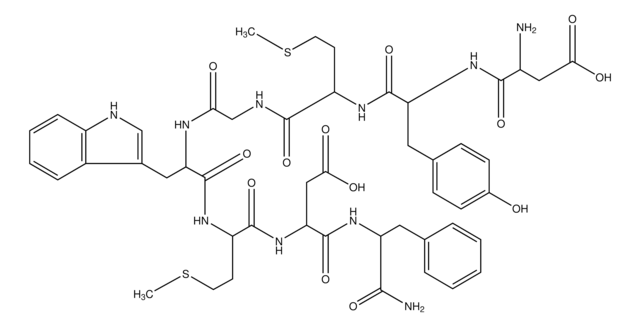
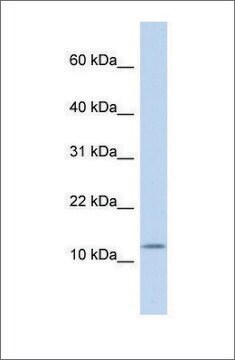
![(Tyr[SO3H]27)Cholecystokinin fragment 26-33 Amide ≥97% (HPLC), powder](/deepweb/assets/sigmaaldrich/product/structures/125/021/32eb71ec-73e5-4cfc-94d0-ebcf5e784e39/640/32eb71ec-73e5-4cfc-94d0-ebcf5e784e39.png)

